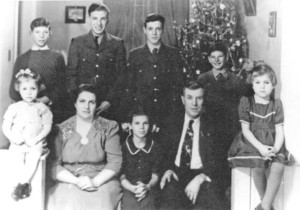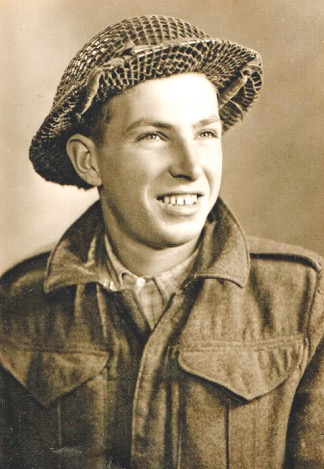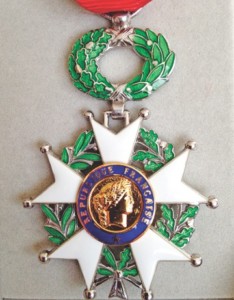Phil Egan, special for The Sarnia Journal
(2016) Forty-one years after his last visit to the Netherlands, Jim Charron finally returned. The reception he received stunned him.
It was 1985, the 40th anniversary of the end of the Second World War. The grateful people of the Netherlands, it turned out, had not forgotten their liberation from the Nazi yoke by Canadian soldiers.
Everywhere the old veteran travelled, he was treated like a conquering hero. Little children would pump his hand and cry, “You were with the Lincs!” recognizing his Lincoln and Welland regimental cap badge.
“He had always been reluctant to talk about the war,” daughter Janet would later say. “Something changed in him after that trip. Suddenly, it seemed okay to talk about it.”
The oldest of eight in a family of miners, Jim Charron had left school in Larder Lake after Grade 8. At age 14 he found work in the gold mines of the Timiskaming area of north-eastern Ontario.
When war broke out in September of 1939, Charron had just turned 14, but he was anxious to enlist. He finally did so at age 17, lying to the enlisting officer about his age. He took basic training in Newmarket, where he met a young man who would become his best friend, Hugh Stewart. Together, they trained on the Bren gun, the primary light machine gun of the Commonwealth forces.
Shipped overseas in February of 1944, the two pals arrived on the battlefields of Normandy two months after D-Day and were thrust into the ferocious Battle of Falaise Gap. The war became real for Charron very quickly. The battle to encircle the 80,000 troops of the German Seventh Army had begun. On the second day of the fight, Hugh Stewart was killed in action.
There was no time to grieve. The following month, the regiment was in Belgium and the Netherlands, chasing retreating Germans in the hotly contested Battle of the Scheldt. A photo of Charron taken on his 19th birthday shows him wearing a plaid shirt beneath his uniform jacket. While clearing an abandoned farmhouse, he had liberated it from a chest of freshly laundered clothing, a fleeting moment of joy among the chaos.

Jim Charron, with the family at Christmas, 1943, before shipping out. From left are: Wilfred, Jim, Fern Charron (in reserves and Yvon Charron; front row: Mary Rose, Alda , Collette, Adelard and Irene Charron.
Charron family photo
The retreating Germans blew up dikes and lobbed 70 mm shells at the pursuing Canadians. At Bergen op Zoom, one of these shells exploded overhead, riddling Charron’s body and head with shrapnel. Hospitalized and shipped home, Jim Charron moved to Sarnia in 1949 and spent the rest of his working life in the Chemical Valley.
A grateful France finally recognized those who fought to liberate its soil. Following Jim’s death in 2015, daughter Janet received his posthumous Legion of Honour – France’s highest award.



